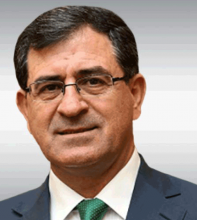You are here
Global Peace Index: Navigating a world in flux
Jan 09,2024 - Last updated at Jan 09,2024
The Global Peace Index (GPI) is a widely recognised comprehensive tool that assesses peace in nations and regions worldwide. Developed by the Institute for Economics and Peace, it provides valuable insights into global peace conditions, enhancing understanding of factors contributing to or detracting from peace. The GPI integrates various indicators, including community safety, levels of militarisation, ongoing conflicts and respect for human rights, offering a holistic view beyond direct violence.
Collaborating with an international committee of peace experts, data is collected and compiled by the Economic Intelligence Unit. Launched in May 2009, annual reports have since been released. The GPI classifies 163 independent countries and regions, representing 99.7 per cent of the world’s population, based on their peace levels. Over the past decade, the index has highlighted increasing global violence and decreasing peace.
The 2023 index ranks Iceland, Denmark, Ireland, New Zealand and Austria as the safest countries, while Afghanistan, Yemen, Syria, South Sudan and the Democratic Republic of the Congo are deemed the least peaceful. Key 2023 findings include the world experiencing less peace in the past 15 years, a 5 per cent decline in global peace levels during that period, and increased peace inequality between the most and least peaceful nations.
Despite a decrease in overall GPI points in 2023 due to declines in six represented geographical regions, some countries showed improved peace levels. However, there was a 96 per cent rise in conflict-related deaths, and the global economic cost of violence reached $17.5 trillion, equivalent to 12.9 per cent of the world’s GDP, or $2,200 per person.
The GPI’s significance lies in raising awareness and accountability globally. It serves as a tool to encourage effective measures for countries to improve their index standings, inform policy decisions and promote diplomatic efforts. The index classifies countries based on their relative peace levels, offering a snapshot of the global situation. Nordic countries consistently dominate the top positions, with factors such as low crime rates, political stability and effective institutions contributing to their success.
Countries facing ongoing conflicts and political instability rank lower. Afghanistan, Syria and South Sudan exemplify nations encountering significant challenges in achieving peace. The gap between the most and least peaceful nations underscores global peace inequalities linked to economic disparity, political instability and historical conflicts. Addressing this gap requires collective efforts, including diplomatic initiatives, conflict resolution mechanisms, and support for sustainable development.
The Global Peace Index provides a valuable framework for understanding and addressing the complex challenges facing global peace. By raising awareness, informing policies, and promoting diplomatic efforts, the index contributes to building a more peaceful and stable world. As nations aspire to improve their positions in the index, these efforts aim to inspire a more peaceful and stable global community. May decision-makers be inspired to choose peace in various corners of the world.














Add new comment